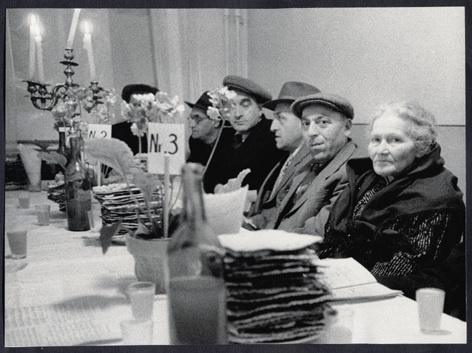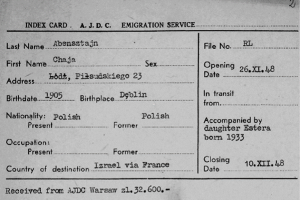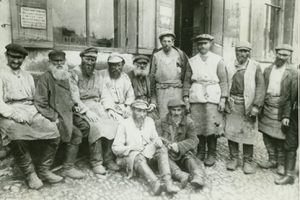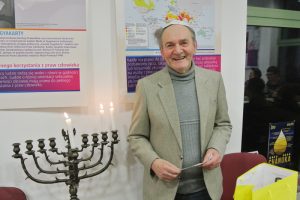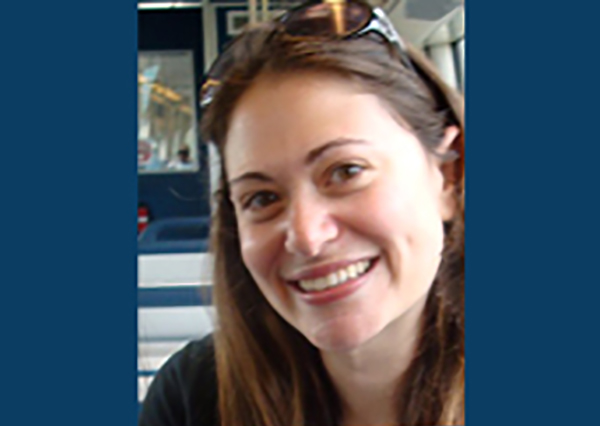
From a JDC Volunteer in Romania to a Historian of JDC Work in Poland
Rachel Rothstein served as JDC/Jewish Service Corps volunteer in Romania in 2004/2005. She received her PhD from the University of Florida in 2015. Dr. Rothstein specializes in American Jewish and Polish Jewish history. She currently teaches Social Studies at the Felicia Penzell Weber Jewish Community High School in Atlanta, Georgia.
Q: What is your connection to JDC?
A: My connection to JDC dates back to my study abroad term in Prague in 2002. I was curious about Jewish life in Central and Eastern Europe after the Holocaust. JDC was, of course, instrumental in supporting Jewish life in the region. And in August 2004 I was off to Timișoara in Romania for a one-year stint as a JDC/Jewish Service Corps volunteer to do Jewish outreach work with youth.
Q: What did you do as a JDC/Jewish Service Corps volunteer? And what did that experience mean to you?
A: I was based in Timișoara, but, as the only JDC/Jewish Service Corps volunteer in Romania at the time, I also travelled to work with Jewish communities in Arad, Bucharest, Cluj-Napoca, and Oradea. Doing so allowed me to experience the richness of Jewish life and Jewish identity throughout the country. My service focused on youth programming, but I also served as a resource for anyone in the Romanian Jewish community. For example, I introduced an Adopt a Grandparent program, planned holidays and events around them, ran a Rosh Chodesh group for women, and engaged local Jews in International Mitzvah Week. Working with the Romanian Jewish community was fascinating to me. These were people who had lived through communism, held on to their Jewish identity, and strove to create a viable future for themselves and their children.
Q: How has your JDC/Jewish Service Corps service influenced your scholarship?
A: I started my service in Hungary, actually, at Szarvas, the JDC and Ronald S. Lauder Foundation flagship summer camp for young Jews from countries throughout the region. One of the most interesting conversations I heard was between a Romanian and a Polish camper. They were comparing their – very different – Jewish communities. That exchange sparked my scholarly interest. I wanted to know how communism influenced Jewish life. Later, my experiences in Romania kept me interested in this topic, gave me ideas to start a project that I could pursue in graduate school, and built the foundations for me to learn more about that history. My initial plan was to write a comparative study of post-war Jewish communities in Poland and Romania. However, I ultimately chose to focus my dissertation on one country. But I hope to return to the sources I collected about Romania and to continue the original project.
Q: How did you become interested in the post-World War II history of Polish Jews?
A: I had been to Poland during high school, and was under the impression that there was no Jewish community left. So imagine my surprise when I returned just a few years later in 2002, this time with the Prague study abroad program, and I met young Jews, and heard about contemporary Jewish life there. But I didn’t find much written about Jewish life during the communist era. Most studies claimed there was no remaining Jewish life, but I was skeptical. That skepticism led me to my dissertation topic.
Q: You defended your dissertation, titled “Small Numbers, Big Presence: Poland, the U.S., and the Power of Jewishness after 1968” at the University of Florida in 2015. What did your project investigate?
A: My project begins in 1968 when the Polish Communist government responded to Israel’s victory in the Six Day War by unleashing an antisemitic campaign that resulted in the forced emigration of 30,000 Polish Jews and prompted those who stayed in Poland to keep a low profile. I challenge the narrative that 1968 was the final chapter of Polish Jewish life. My study is, above all, a story about the interrelated nature of the modern Jewish experience. Polish Jewry was highly dependent upon outside Jewish communities. Helping fellow Jews in Poland mirrored the Talmudic ideal of “Kol Yisrael Areivim Ze Ba Ze” (all of Israel is responsible for one another). Whether it was ensuring kosher food, helping the next generation learn what it meant to be Jewish in the 1970s and 80s, or speaking out in Congress during periods of antisemitism, world Jewry was determined to preserve Polish Jewishness. While Jews in Poland were few in number, the post-1968 period demonstrates that they held a strong presence in the minds of governments, organizations, and individuals in Poland and abroad.
Although the vibrancy of Jewish life decreased compared to the pre-1968 period, Polish Jews continued to belong to regional branches of the Jewish religious community, and to chapters of the secular Social-Cultural Society of Jews in Poland. Older people in particular, observed Jewish holidays communally. Younger ones tended to explore their Jewishness and celebrate Jewish holidays in their own age groups. And the State Jewish Theater in Warsaw provided a cultural outlet for some Polish Jews. These were all activities that could stigmatize Jews who lived under communism. But Jews’ involvement in “things Jewish” only testified to the resilience of that community. Most Polish Jews at the time were not religious, but JDC, for example, offered all of them the opportunity to engage in Judaism and in Jewish life. JDC showed Polish Jews that Jewish continuity was possible.
Jews assembled for a Passover meal in Poland, 1971.
Photographer: Jean Mohr.
Q: What did your research at the JDC Archives reveal about the role and activities of JDC in Poland?
A: JDC was crucial for Polish Jews, though, interestingly enough, it didn’t operate officially for most of the period I study, as it was expelled after the Six Day War in 1967. Instead, JDC funded the Geneva-based Société de Secours et d’Entraide, which supported the religious community in Poland. The Polish Communist government allowed this in order to garner some good publicity for itself. JDC gave financial assistance to the Jewish religious community, provided Jewish ritual items, and supported the elderly and the needy. JDC made sure that even in the darkest period of post-Holocaust Polish Jewish history, Jews in Poland had access to kosher food, matzah for Passover, lulavim and etrogim for Sukkot, and to visiting rabbis or cantors during High Holy Days. It was thanks to JDC that the Polish Jewish religious community continued to function. On the other hand, the government financed the secular Jewish community, and did not allow it to accept JDC support. This was the case until late 1981, when JDC officially returned to Poland. But JDC was never truly absent. It found ways to sustain Jews in Poland even when it was incredibly difficult and had to be done in secret.
Q: Your recent article, “Am I Jewish?” and “What Does it Mean?”: The Jewish Flying University and the Creation of a Polish-Jewish Counterculture in Late 1970s Warsaw” (Journal of Jewish Identities 8:2 (July 2015): 85-111) tackles the myth of the absence of Jews in Poland in the 1970s. How did JDC contribute to sustaining and reinvigorating Jewish life there?
A: The Jewish Flying University, which was a group of young Jews in Warsaw who explored their Jewish roots in the late 1970s, is probably one of the more well-known examples of Jewish life in Poland in the period I study. Ralph Goldman, a JDC leader, knew about the group, but he could do little for it. Most of the group’s participants were involved in the opposition to the Polish Communist government, and any association with the group could have politically endangered JDC activities. So there were limits to what JDC could do, and this was one example. But, of course, these were the last years of communism, and JDC was there supporting Jewish life behind the scenes. After January 1982, it was working openly and supporting initiatives both to sustain and reinvigorate Jewish life. JDC has turned its attention also to young people. Workshops, camps, and activities designed for young Jews instilled an awareness of Jewish identity for those who were just discovering their roots, and empowered youth to explore their heritage and become the leaders they are today.
The post-1989 Jewish revival that has amazed Jewish visitors to Poland would not have been as robust without JDC’s continued commitment to supporting Polish Jewishness. Today, being Jewish in Poland is something to be proud of. Poland boasts the largest Jewish Culture Festival (held in Krakow). Hundreds of Jews flock to the annual Limud Poland conference to explore Jewish topics. The two major JDC-supported Jewish Community Centers, in Warsaw and Krakow, introduce innovative and inclusive programming for Jews of all ages and backgrounds. The Lauder-Morasha Jewish day school in Warsaw now offers online education for students throughout Poland. And the Polin Museum of the History of Polish Jews in Warsaw shines a bright light onto the 1,000-year-old Polish Jewish history. The educational, cultural, and religious projects that JDC has been pursuing in Poland over the years paved the way to creating foundations for a thriving Jewish community in Poland.
